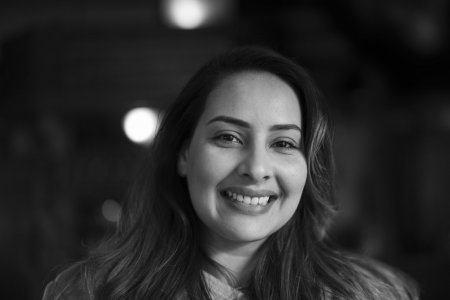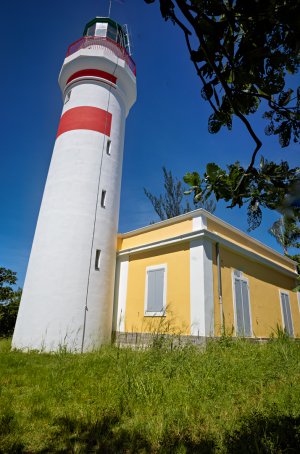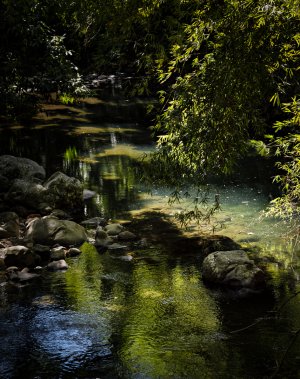boojum
Mentor
Pont Levesque, de fruits, some nice bread, looks like a good start to the day.
Coldkennels
Barnack-toting Brit.
No, he's down in Kent. But they do top-notch work - he's had guys from South Africa bring them Land Rovers to fix up before!Oh hec ... I drive a Land Rover .
Have done for over 20 years .
Better get it checked .
Don`t suppose your Land Rover friend is in Lancashire by any chance
To Boojum's point... sometimes that work isn't cheap. While it is possible to repair anything mechanical, it can run to the thousands to get it done. Even their per-day labour cost is expensive. But, like with cameras... if you want it done properly, and you want something that will keep running without further work, it pays to pay the extra. The poor man buys twice, and all that.
A
AndyCapp
Guest
How to change ISO on the M9?
Ken Rockwell told me: "Press and hold the ISO button while pressing the arrow buttons."
told me: "Press and hold the ISO button while pressing the arrow buttons."
It makes me think, what the hell am I doing?
Learning. That's what I am doing. It keeps me humble.
Ken Rockwell
It makes me think, what the hell am I doing?
Learning. That's what I am doing. It keeps me humble.
Last edited by a moderator:
boojum
Mentor
How to change ISO on the M9?
Ken Rockwelltold me: "Press and hold the ISO button while pressing the arrow buttons."
It makes me think, what the hell am I doing?
Learning. That's what I am doing. It keeps me humble.
Yes, it is sort of counter-intuitive and clumsy but that is how I get it done. I just checked. Maybe it is some Teutonic fail-safe system.
A
AndyCapp
Guest
Last edited by a moderator:
A
AndyCapp
Guest
I keep joking about Ken RockwellYes, it is sort of counter-intuitive and clumsy but that is how I get it done. I just checked. Maybe it is some Teutonic fail-safe system.
His instructions for the M8 are clear and matter-of-fact. I respect him with a smile.
Michael Markey
Mentor
Regardless of the menu screen it is often claimed that the frame lines shown are merely approximations .I don`t know how true this is or whether that aspect has been improved of successive iterations . Thinking about it (I`ve been using them for so long) I probably make allowances for this. I know a fair few M users who have never raised the camera to their eye in all the time that they have been using them .They always shoot from the hip.With the 21mm even using the LV of the M10, the final framing remains a mystery as part of the picture is hidden behind the menu screen.
Will it be the same with Visoflex? The transfer of DNGs using the M10 Wi-Fi connection is very slow, and the connection was lost after 25 images.
View attachment 4836297
boojum
Mentor
The only way I know to get all that you want in the image with an RF camera is to shoot with really lots of space around what you want and crop in edit. Otherwise just be happy with what you got. I am not that fussy. I am the only person or maybe one of a few who know what is just outside the image so who cares? This is a lot like horseshoes and hand grenades, close counts.
Last edited:
A
AndyCapp
Guest
Pointing the camera in the general direction of the subject, zone focusing, and taking the reading of the built-in light meter only as an opinion...Regardless of the menu screen it is often claimed that the frame lines shown are merely approximations .I don`t know how true this is or whether that aspect has been improved of successive iterations . Thinking about it (I`ve been using them for so long) I probably make allowances for this. I know a fair few M users who have never raised the camera to their eye in all the time that they have been using them .They always shoot from the hip.
My son does not understand my Leica phase at all. He listens to me swear, sees the results of my attempts, shakes his head, and stares into eternity.
He doesn't get it at all!
Last edited by a moderator:
Godfrey
somewhat colored
Buy an M6. Then you can forget what you were trying for when you make the exposure and only wonder at and enjoy what you captured a few days later. The magic of film ... 
Just keep at it, don't hold expectations of mastery, and enjoy what you achieve. Work at what you want to achieve. Over time, you'll find using your M to be second nature. 21mm is something of an extreme and getting absolutely precise framing is difficult even with an EVF or SLR camera. Try 10mm ... it's far more difficult.
And don't be afraid or too lazy to take the card out of the camera and put it into a card reader. The transfer speed is several dozens of times faster.
G
Just keep at it, don't hold expectations of mastery, and enjoy what you achieve. Work at what you want to achieve. Over time, you'll find using your M to be second nature. 21mm is something of an extreme and getting absolutely precise framing is difficult even with an EVF or SLR camera. Try 10mm ... it's far more difficult.
And don't be afraid or too lazy to take the card out of the camera and put it into a card reader. The transfer speed is several dozens of times faster.
G
sojournerphoto
Mentor
This is good - there is something wonderful about finding out what you’ve got, later. I’ve been going through a round of developing and scanning films from the last ‘few’ years and it’s been a journey of delight. A couple of rolls have been through the camera twice and, even there, there are things that are just lovely.Buy an M6. Then you can forget what you were trying for when you make the exposure and only wonder at and enjoy what you captured a few days later. The magic of film ...
Just keep at it, don't hold expectations of mastery, and enjoy what you achieve. Work at what you want to achieve. Over time, you'll find using your M to be second nature. 21mm is something of an extreme and getting absolutely precise framing is difficult even with an EVF or SLR camera. Try 10mm ... it's far more difficult.
And don't be afraid or too lazy to take the card out of the camera and put it into a card reader. The transfer speed is several dozens of times faster.
G
Another ‘divide’ in photography is between the idea of deliberately making an image, with ever increasing levels of precision and control in our digital age, and the idea of taking photos to find out what the picture looks like. Obviously there’s overlap, but there are quite different philosophical underpinnings.
Accepting these are very broad generalisations, but you could identify the former approach with image centred viewfinders (slr, evf etc per my previous post) and a desire to maximise control, editing freedoms and ‘image quality’ and the latter approach with subject centres viewfinders (rf’s etc) and a greater acceptance of what you get.
I’m not aiming to divide the word of photography here - it’s clearly a continuum and you can’t actually generalise - but it might be a useful way of thinking and enjoying the process.
21mm is pretty wide - I’ve had a 21 on my MDa around London the last couple of mornings.
A
AndyCapp
Guest
A
AndyCapp
Guest
I have an M6.This is good - there is something wonderful about finding out what you’ve got, later. I’ve been going through a round of developing and scanning films from the last ‘few’ years and it’s been a journey of delight. A couple of rolls have been through the camera twice and, even there, there are things that are just lovely.
Another ‘divide’ in photography is between the idea of deliberately making an image, with ever increasing levels of precision and control in our digital age, and the idea of taking photos to find out what the picture looks like. Obviously there’s overlap, but there are quite different philosophical underpinnings.
Accepting these are very broad generalisations, but you could identify the former approach with image centred viewfinders (slr, evf etc per my previous post) and a desire to maximise control, editing freedoms and ‘image quality’ and the latter approach with subject centres viewfinders (rf’s etc) and a greater acceptance of what you get.
I’m not aiming to divide the word of photography here - it’s clearly a continuum and you can’t actually generalise - but it might be a useful way of thinking and enjoying the process.
21mm is pretty wide - I’ve had a 21 on my MDa around London the last couple of mornings.
lukitas
second hand noob
Myself, I use an M10, mostly with a 50 summilux, often wide open. I usually get at least one eye in focus.
Used to be, being a photographer required the acquisition of a set of skills, focusing being one of them. I get it, automation makes everything a lot easier. And I do shoot mostly in aperture priority auto. But getting my subject in focus is for me an essential part of "the taking of a picture", I choose where focus needs to fall, and I choose how deep the depth of field needs to be, and I revel in being able to use those skills with my M10.

Used to be, being a photographer required the acquisition of a set of skills, focusing being one of them. I get it, automation makes everything a lot easier. And I do shoot mostly in aperture priority auto. But getting my subject in focus is for me an essential part of "the taking of a picture", I choose where focus needs to fall, and I choose how deep the depth of field needs to be, and I revel in being able to use those skills with my M10.

A
AndyCapp
Guest
Your picture gallery confirms your statement.Myself, I use an M10, mostly with a 50 summilux, often wide open. I usually get at least one eye in focus.
I choose where focus needs to fall, and I choose how deep the depth of field needs to be, and I revel in being able to use those skills with my M10.
You are PFE.
Last edited by a moderator:
Godfrey
somewhat colored
If you have an M6, why did you start a thread asking how difficult it is to migrate from AF to M10 RF? Shoot with the M10 in exactly the same way you shoot with the M6... ??I have an M6.
Have you not used the M6 at all?
G
A
AndyCapp
Guest
No. It needs an overhaul. I bought it from a garage sale.If you have an M6, why did you start a thread asking how difficult it is to migrate from AF to M10 RF? Shoot with the M10 in exactly the same way you shoot with the M6... ??
Have you not used the M6 at all?
G
A
AndyCapp
Guest
Godfrey
somewhat colored
Having a non-functional M6 is kinda beside the point, don't ya think? If you own one but it doesn't work, you have no benefits from having it thus far.No. It needs an overhaul. I bought it from a garage sale.
Do you know that it doesn't work at all? Have you tried it?
G
Godfrey
somewhat colored
Hand-holding 1/30 sec with a 75mm lens is well below a reliable threshold. You'd have been better off going to f/8 for 1/60 second.I took this in Cascade Delices, Sainte-Suzanne, with an M10 + 75mm F/1.5 Nokton, at
F11, and 1/30 sec, no tripod, no stabilizer.
One out of three was lucky, no blur. I ordered a new Manfrotto ball head.
View attachment 4836326
G
Share:
-
This site uses cookies to help personalise content, tailor your experience and to keep you logged in if you register.
By continuing to use this site, you are consenting to our use of cookies.




